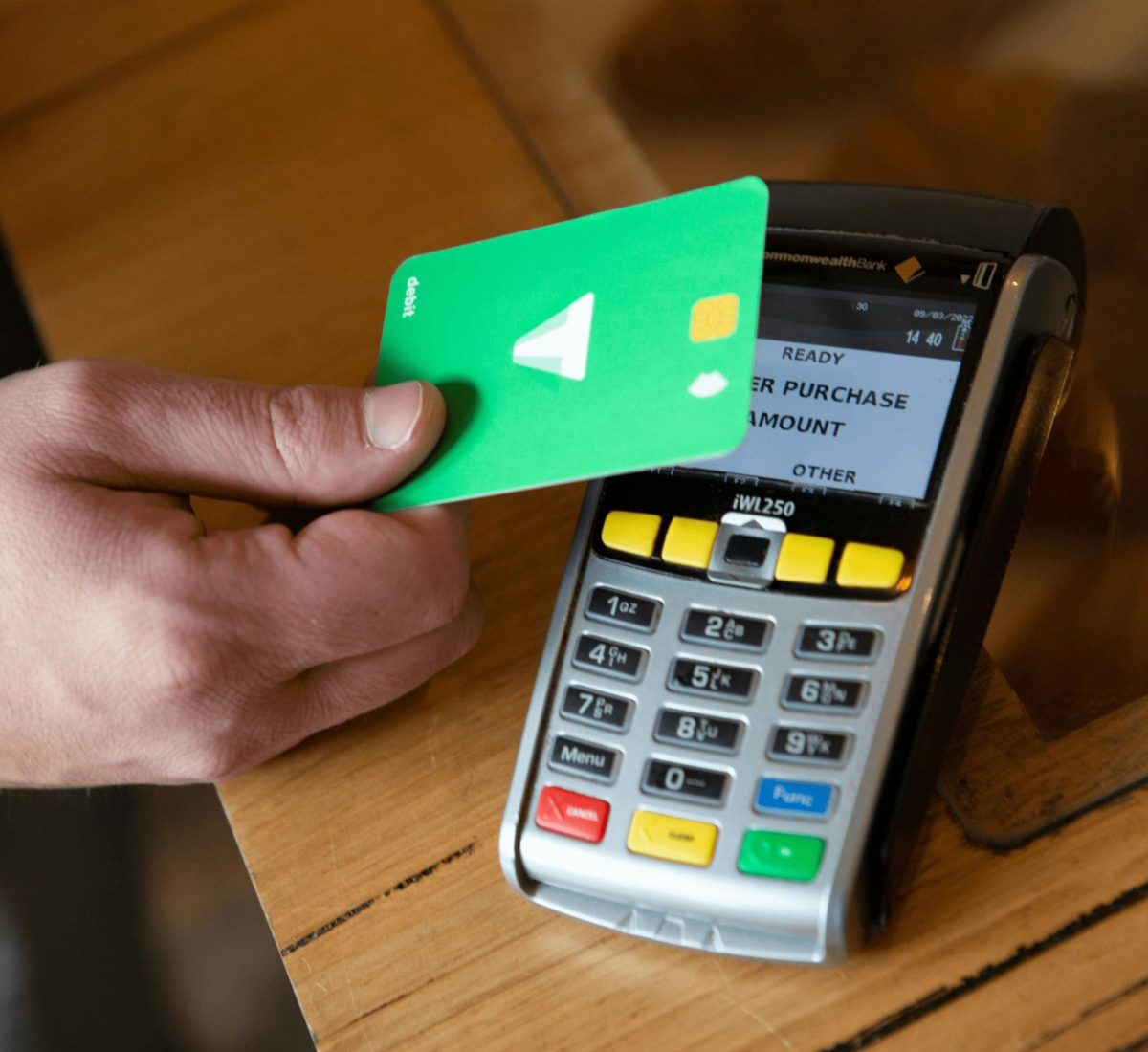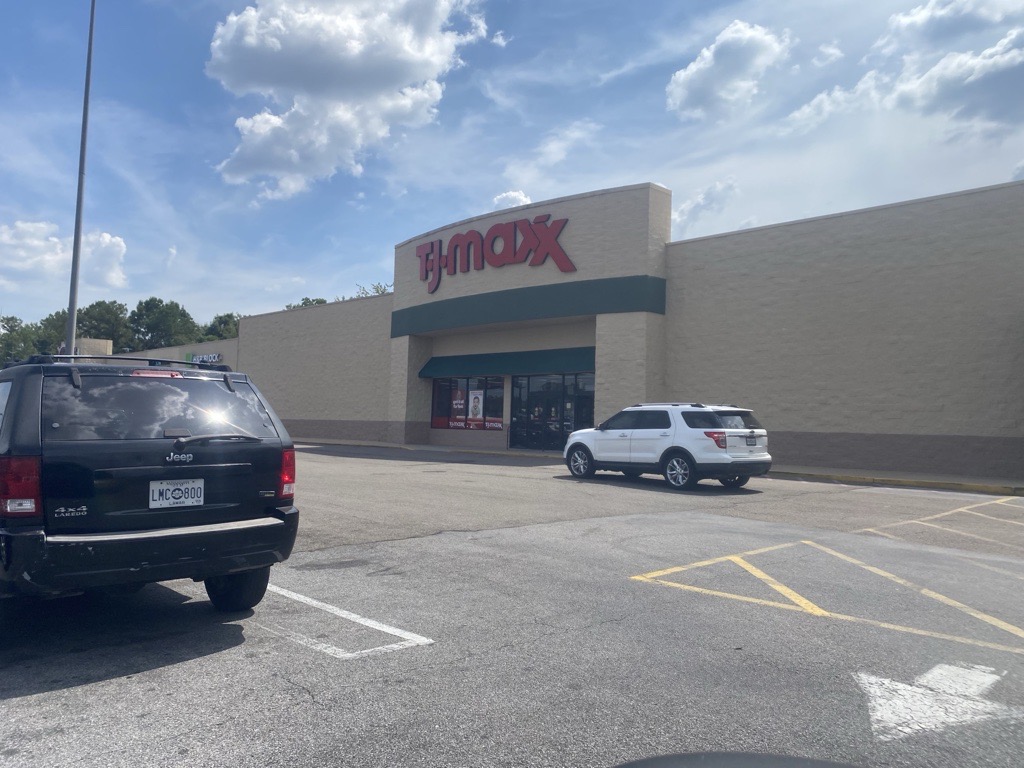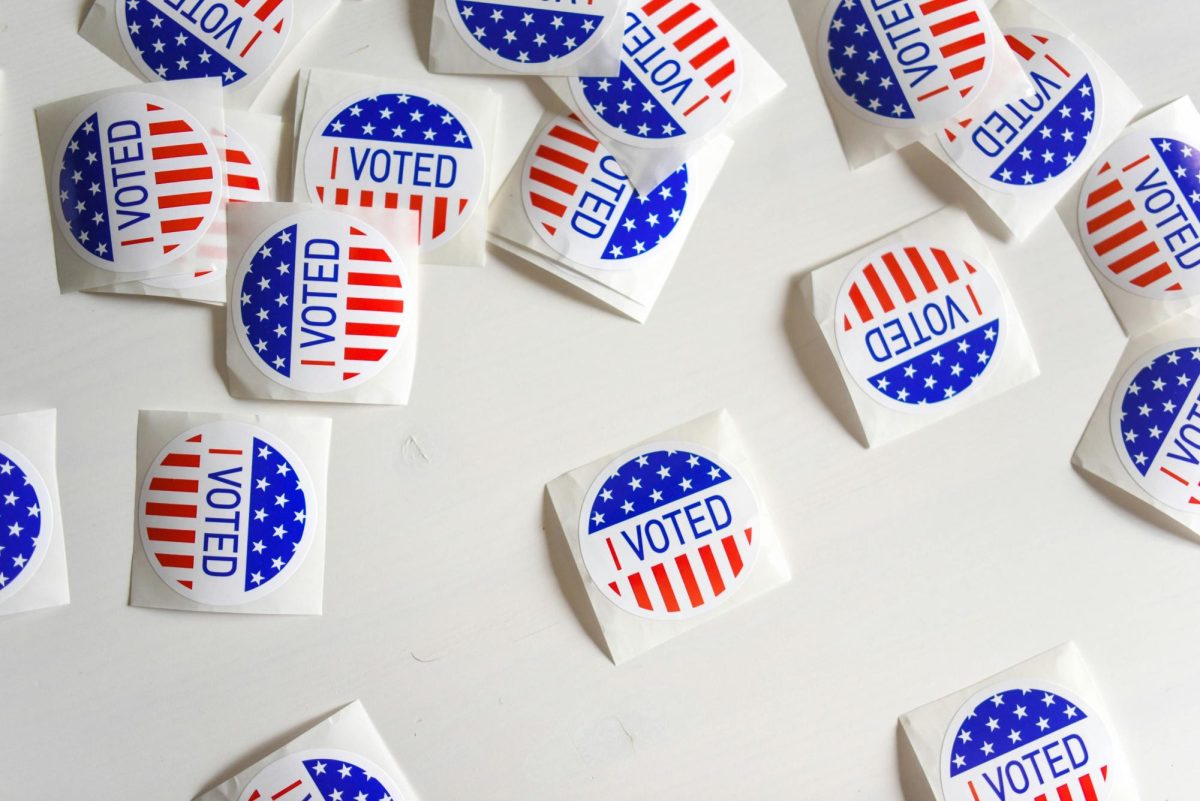The Roy Howard Community Journalism Center’s “What Is True?” team, during routine monitoring of social media, recently identified a widely shared post from a Hattiesburg resident warning about card skimming at self-checkout machines.
The post also raised concerns that RFID scanners can read everything in your wallet — including your credit card details — from 15 to 20 feet away.
We found the skimming claim to be true. Criminals do place card skimmers on or inside gas pumps and other point-of-sale terminals to steal customer data, especially when paired with hidden cameras or altered keypads.
However, the RFID claim is false. Experts say contactless cards are encrypted and do not broadcast sensitive information. RFID scanners cannot read full card data from 15 to 20 feet away — and there’s no credible evidence of such thefts occurring.

Consumers are far more likely to encounter card skimmers at gas pumps and ATMs than to fall victim to RFID theft in public spaces.
For full context and prevention tips, read the full fact-check below:
Fears about card skimming and long-distance credit card theft — fueled by viral warnings and social media posts — have spread quickly in recent years. But how real are these threats?
During routine monitoring of social media for viral claims and rumors, the “What Is True?” team at the Roy Howard Community Journalism Center came across a post from a Hattiesburg resident warning others to be cautious when using debit cards at self-checkout machines. The warning sparked broader discussion about card skimming and raised concerns about whether criminals could steal credit card information using RFID scanners from 15 to 20 feet away.
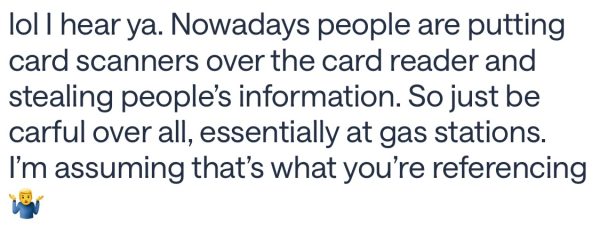
Card skimming is a type of fraud in which criminals install hidden devices on point-of-sale terminals, such as gas pumps and ATMs. These devices capture information stored on the card’s magnetic stripe. Thieves often add hidden cameras to record customers entering their PIN — or tamper with the keypad itself to log keystrokes. With both the card data and the PIN, a criminal can create a clone of the card and use it for unauthorized purchases or withdrawals.
At gas pumps, skimmers are usually installed inside the machine, making them difficult to detect. To reduce the risk, consumers should use pumps that are in full view of an attendant, cover the keypad when entering a PIN, use tap-to-pay if available or pay inside the store.
ATMs present similar risks. Some skimmers are installed inside the terminal, while others may be placed directly over the card slot. Keypads may also be replaced or covered with overlays to capture PINs. Criminals can install these devices in seconds, often when attendants are distracted or no one is watching. Customers should inspect machines for signs of tampering, including loose parts, scratches or anything that appears unusual.
While skimming is a legitimate threat, concerns about long-distance RFID theft are largely unfounded.
RFID, or radio frequency identification, is a technology that uses radio waves to read data stored in chips from a short distance. It has long been used in industries such as retail and logistics. More recently, RFID chips have been embedded in some credit and debit cards to enable contactless payment.
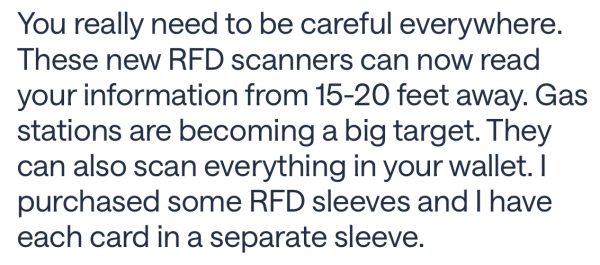
Although it is technically possible for someone to scan a contactless card using an RFID reader, experts say it is extremely unlikely. Modern RFID-enabled cards are encrypted and do not broadcast full account numbers, expiration dates or security codes. Without that information, criminals cannot use the data to make purchases.
In addition, the effective range of RFID scanners is limited. While some claims suggest that card data can be stolen from 15 to 20 feet away, there is no credible evidence to support that. For a scanner to pick up any signal, it would typically need to be within inches of the card. Even then, encryption would make the data difficult to use.
If RFID theft were as easy or widespread as some suggest, contactless cards likely wouldn’t be so common. Consumers face a much higher risk of encountering card skimming at a gas pump or ATM than having their information stolen through RFID.
For those seeking added peace of mind, RFID-blocking wallets and sleeves are available. But for most people, staying safe means paying attention to physical machines, covering PIN pads and being aware of surroundings — not worrying about scanners from across the parking lot.
This report was produced by the Roy Howard Community Journalism Center as part of its “What Is True?” fact-checking service. The center’s researchers investigate local claims to help the public separate fact from fiction. To learn more or submit a claim for review, visit rhcjcnews.com/witreq.


